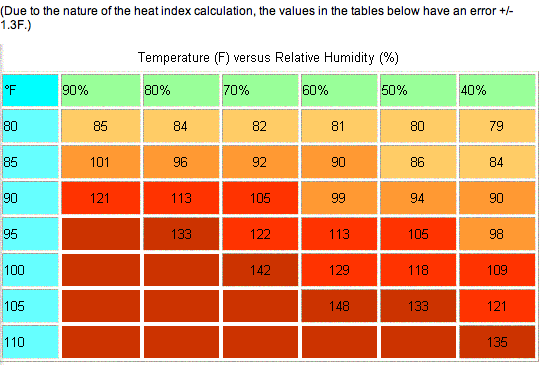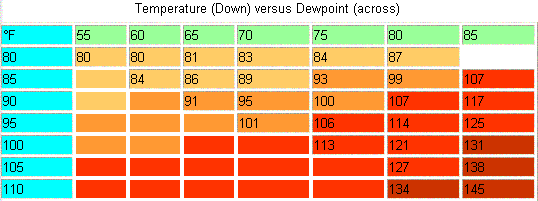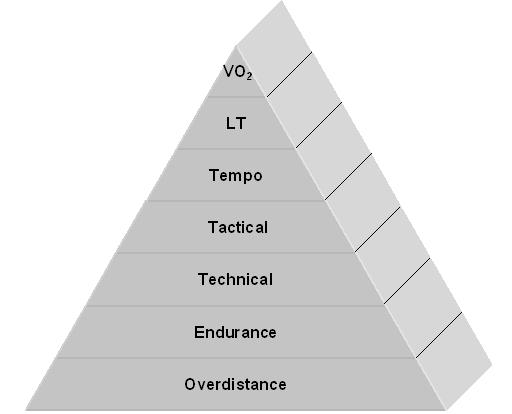Running in Heat (and Humidity)
There’s an excessive heat warning in NYC today. I might actually have to skip my usual afternoon run in favor of the treadmill. From 12PM to 4PM, the apparent temperature will be about 102° F – 104° F; the relative humidity will range from 46% – 56%. Is it crazy to say that I’m a little tempted to do a quick 1-miler around the park, then just call it a day?
I used to be a pretty consistent early runner but, the problem with running earlier in the summer is that it’s more humid. It’s when your sweat drips off as opposed to evaporating while you run. I’ve found that it’s generally more uncomfortable to run in extreme humidity than in extreme heat. Here’s why: first, let’s define relative humidity.
Relative humidity is the amount of water vapor in the air at a specific temperature compared to the maximum water vapor that the air is able to hold without it condensing.
…if you’re just measuring it based on comfort level, you’re still better off running when the temperature is higher, but humidity is really low
As relative humidity increases, you’re less able to cool yourself down by sweating. Think of it as bucket filling up with water. The bucket can only hold so much given its size (just as the air is only able to hold so much water vapor at a certain temperature). Once it reaches it’s limit, it just overflows (your sweat drips off instead of evaporating) – at some point over a period of time, if the the heat keeps up, condensation of atmospheric water vapor takes place and it rains.
Since you can’t cool down by sweating, your internal temperature starts going up and the ambient temperature feels hotter than it actually is. This chart from NOAA shows the relationship between heat and relative humidity – also known as the Heat Index (the temperature the body feels when combining these two metrics)
As you can see, it’s tougher to run in extreme humidity. The average temperature in the summer (at least in NY) has been hovering around 80 ° F even at 6AM. If I were to run in the morning when humidity is higher (let’s say 70%), it could feel warmer than if I were to run in the afternoon at the same temperature but at a humidity of just 30% – 40%.
Of course, there’s a break-even point where it doesn’t really make a difference in temperature, but if you’re just measuring it based on comfort level, you’re still better off running when the temperature is higher, but humidity is really low.
- When you have high temperature but low humidity, you can run in a shaded park because you really just want to avoid direct prolonged exposure from the sun.
- When humidity is high in the summer, even if you run in the shade, you’ll still end up drenched in sweat almost immediately and it’ll still feel more uncomfortable, because you can’t avoid humidity like you can avoid the sun.
Most studies on running performance generally address heat and humidity as one combined factor that has a detrimental effect on performance, which makes sense. But, if you wanted to separate the two and choose between them, it’s usually easier to choose dry heat over humidity. In other words, I’d rather go for a run in Las Vegas than in Key West (and I don’t even gamble!)
-*-
Note: dew point also has an effect on the apparent temperature, but it’s less often discussed; it’s basically the temperature at which water vapor condenses. It usually goes up in correlation with relative humidity. Some states have naturally low dew points that stay steady because it’s pretty dry most of the year (e.g. dry heat), whereas others have plenty of moisture in the air year-round so the dew point is usually pretty high or goes up alongside relative humidity (e.g.moist heat) – the effect of the latter is similar to how relative humidity affects temperature




You know, when I run in the Texas mornings, its usually 78 to 80 degrees and humidity is near 100 percent. I sweat just walking from my apartment to car for the drive to my morning run. I’ve gotten used to it, but I’d love to run in the New York mornings. … and definitely the NY afternoons, when the temps are 20 degrees cooler than what they are here….